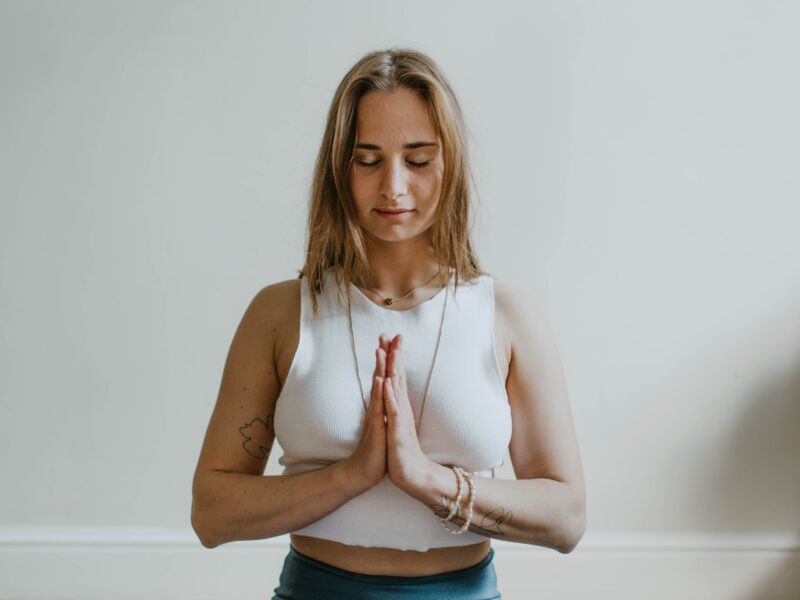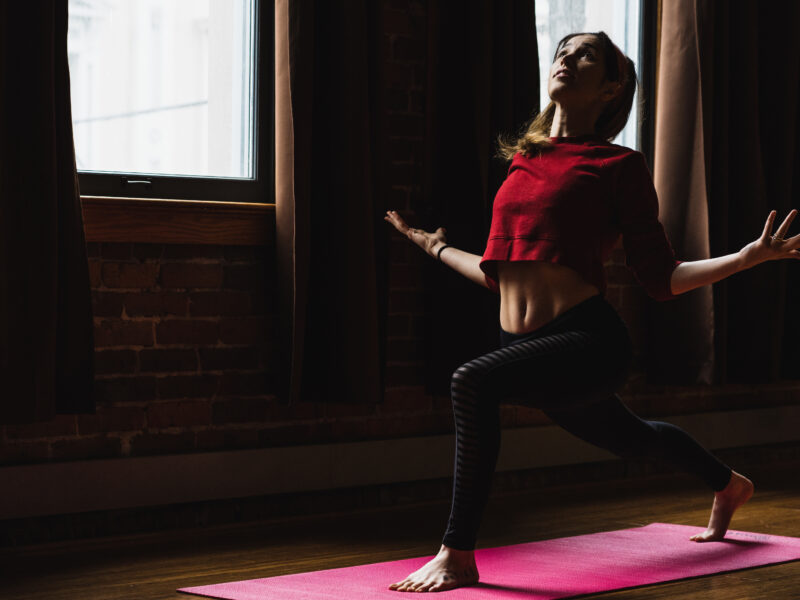Rituals and Remedies
Balance your energy,boost your health and savour the benefits of introducing a natural selection of traditional Ayurvedic routines into your lifestyle
If waking up is a struggle, midday finds you crashing, and you’re restless and alert at bedtime, it may be time to reset your clock. According to Ayurveda, yoga’s 5,ooo-year-old sister science, one of the keys to good health and feeling great all day long is living in tune with nature’s cycles. Literally and energetically, that means using the sun as a guide for when to rise and when to go to bed. To help you align your system more closely with the cycles of nature, Ayurvedic tradition recommends a routine of morning and nighttime practices collectively known as dinacharya. These rituals are designed to give you calm, focused, sustainable energy to support meditation, yoga, and everything you do throughout the day.
Story by Shannon Sexton
“When I do my dinacharya, there’s a sense that I’m taking really good care of me,” says Kathryn Templeton, founder of the Himalayan Institute’s , founder of the Himalayan Institute’s Ayurvedic Yoga Specialist Training program and an Ayurvedic practitioner in New haven,Connecticut.“My ability to meditate, teach, parent, and practice feels steadier and easier. And I experience more peace of mind.”
To get back in sync, overhaul your daily routine with the simple Ayurvedic practices on the following pages. The morning practices are cleansing and energizing and will infuse you with a calm sense of presence. The evening routine will help you wind down for a restful sleep. Movement, such as yoga asana and meditation, are also essential to dinacharya. Consider incorporating asana before breakfast and meditation in the morning and evening.
Choose one or two of these practices to begin and, after a week, take note of your energy level and mood. Then add a few more practices and repeat the observation process. Over time, these practices may become as routine as brushing your teeth.

Sunrise
According to Ayurveda, the predawn hours are dominated by vata dosha, a subtle energy that makes it easier to get out of bed .Waking before sunrise fills you with vibrant energy for the rest of the day .On the other day ,if you wake after sunrise , a time dominated by kaphas heavy,earthy energy,you’re likely to feel sluggish.Predawn is also considered an auspicious time of day because the atmosphere is still and quiet, making it easierto turn inward and meditate, says Templeton.
Morning
To flush out any germs,pollen,dust, or congestion that have accumulated overnight, try jala neti, a nasal cleansing technique that rinses the sinuses with warm saline with the aid of a teapot- like vessel called a neti pot. Jala neti is a n effective prelude to a morning pranayama or meditation practice.According to yoga tradition, it equalizes the flow of breath between the nostrils and balances the ida and pingala nadis – two energy channels that pave the way for inner exploration.
Pour a cup of warm water( sterilized or distilled) into a neti pot. Add 1/4 teaspoon of non-iodised salt ( kosher or sea salt), stirring until it dissolves. Insert the spout into your left nostril, lean over the sink, and tilt your head slightly to the right so the water flows through he sinus passages and out of the right nostril.Gently blow your nose and repeat on the other side. (Watch a demonstration at yogajournal.com/video/195.)When you’re finished, lie on your back,tilt your head back, and put a few drops of warm sesame oil or ghee ( clarified butter) into your nostrils.
Cleanse
Ayurveda recommends a practice called tongue scrapping to remove that coating that appears overnight, which contains ama, or toxins, said to eventually cause illness.Using a tongue scraper, gently comb your tongue from back to front several times.Rinse the scraper between sessions.Doing this before you brush your teeth is thought to stimulate the digestive response and encourage your body to think about its first meal of the day.
Sip
Before you brush your teeth , eat or drink coffee, mix the juice of half a lemon in a cup of warm water( with an optional pinch of rock salt and 1/2 teaspoon of honey), and drink up . This drink fliushes the kidneys and gastrointestinal tract and stimulates your agni (Digestive fire) so you’re ready to metabolise breakfast.

Massage
According to Ayurveda, massaging your body with warm, pure oils promotes detoxification and moisturises skin. Massage also stimulates circulation and quiets the nervous system. Treat yourself to a ten-minute abhyanga (warmoil massage), traditionally performed in the morning.
Templeton suggests standing on a towel in your bathroom with warmed, organic, cold pressed sesame oil at the ready. Using circular strokes, begin with your scalp, followed by your face and neck. Apply oil to your palms as needed, and work your way down one shoulder, arm, wrist, and hand, using long, up-and-down strokes along your limbs and circular strokes on your joints. Repeat on the other side
Massage your chest and back, and then gently massage your abdomen in a clockwise direction. Rub your hips in a circular motion, and massage one leg at a time, using long strokes on your leg bones and circular strokes on the joints. If you have time, relax and let the oil soak in for ten to 20 minutes. Then, standing on a wet towel in the shower to prevent slipping, scrub off with a mild cleanser. (Don’t want to put oil on your scalp or face?Use dry fingertips instead.)
Dim
As the sun goes down, lower the lights in your home to signal to body and mind that the frenetic pace of the day’s activities is coming to an end—and that it’s time to stop being “on”. According to modern Ayurvedic experts like Porter, that also means minimising screen time on your electronic de vices for at least an hour before bed. Wind down by reading something uplifting or spending time with your family or friends.
Infuse
As night falls, light a stick of incense or a sandalwood and vanilla candle. Or add a few drops of these aromas, in the form of essential oils, to a warm bath. From an Ayurvedic perspective, says Templeton, these scents have a calming, balancing and grounding effect. “When we consistently associate these aromas with a certain state of being, such as relaxation, we create a memory in the brain,” she says. “The next time we breathe in these aromas, our neurophysiology remembers that state of relaxation.”
Soothe
“There are several marma points, or Ayurvedic pressure points, on the foot that correspond to the entire body,” says Hilary Garivaltis, founder and director of Ayurvedic Health Education Services. “Doing a foot massage, you can relax the entire body in just a few minutes.”
Wash and dry your feet. Apply warmed, organic, cold-pressed sesame oil to one foot at a time, using your palms to rub the sole from heel to toe in small, circular motions. Re peat on the top of the foot. Massage the ankle, followed by the sides of the foot. Interlace your fingers between your toes, gently push the foot to flex and point, and make clockwise and counterclockwise circles. Beginning with the little toe, rub each toe gently, and apply a little pressure in the webbing. Finally, pull each toe slightly, and put on clean cotton socks to sleep in.

Savour
Before bed, heat a cup of organic whole milk until it boils. Add a pinch of ground cardamom and nutmeg (spices that, in Ayurveda, are said to promote sleep), plus cinnamon (to aid digestion). Let the drink cool a little and add honey to taste. Warm whole milk is used in Ayurveda as an insomnia remedy. Don’t drink milk? You can also sip chamomile, valerian, or lemon balm tea.
Breathe
To calm yourself for sleep, or before you sit for evening meditation, spend a few minutes doing Nadi Shodhana Pranayama (also known as alternate-nostril breathing). This cleansing breath practice calms the nervous system and, on a more subtle level, opens and balances the sushumna nadi, an energy channel that quiets and steadies the mind.
Place your right thumb over your right nostril to close the airway. In hale through the left nostril, and then use your ring finger to close off the left nostril. Lift your thumb and exhale out of the right nostril. Breathing in through the right nostril and putting your thumb over your right nostril again, exhale out of your left nostril. This completes a single round; try to do five to ten rounds per sitting. “This practice helps you transition from activity to stillness, re laxing the body and mind,” Templeton says. (Watch a demonstration of Nadi Shodhana at yoga journal. com/nadishodhanademo.)
This article was first published in the print edition of Yoga Journal Singapore, which is now Yogahood Online.






